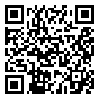BibTeX | RIS | EndNote | Medlars | ProCite | Reference Manager | RefWorks
Send citation to:
URL: http://jdisabilstud.org/article-1-3142-en.html
2- Associate Professor, Science and Arts University, Yazd, Iran
3- Associate Professor, Azad University of Medical Sciences, Tehran, Iran
Abstract
Background & Objectives: Premenstrual dysphoric disorder (PMDD) is defined as a set of recurrent physical, cognitive, emotional, and behavioral symptoms affecting women, which occur cyclically during the luteal phase of the menstrual cycle or within a few days after the onset of menstruation. Women with premenstrual boredom syndrome endure many psychological problems. Emotion regulation, such as anger and arousal, plays a very crucial role in the treatment of other psychological issues of this syndrome. So far, many pharmaceutical and non–pharmacological treatments have been used for PMDD. Transcranial Direct Current Stimulation (tDCS) of the brain is a non–invasive technique. There is very little research on the effect of tDCS on emotion regulation. Also, no study has investigated the impact of tDCS on PMDD and its psychological symptoms. Therefore, this study aimed to determine the effectiveness of tDCS on the brain in regulating the emotions of patients with PMDD.
Methods: This quasi–experimental study employed a pretest–posttest design with a control group. Among the women suffering from PMDD in Yazd City, Iran, 30 eligible volunteers in the age range of 30 to 40 years entered the study in a simple random manner. Fifteen were randomly assigned to the intervention group and 15 to the control group. The inclusion criteria were as follows: having PMDD confirmed by a gynecologist and obstetrician, the age range of 30 to 40 years, and not using other treatment methods such as drug therapy and psychotherapy. The exclusion criteria included absence from one session of tDCS and not completing the questionnaire during the study. The Difficulties in Emotion Regulation Scale (DERS) (Gratz & Romer, 2004) compared emotion regulation variable scores at two time points, before and after tDCS. Data analysis was done using covariance analysis. The significance level of the tests was 0.05.
Results: Data analysis showed that the score of the emotion regulation test in women with PMDD in the intervention group and after receiving the treatment decreased significantly compared to the control group (p<0.001). Based on the effect size results, 58% of the difference between the intervention and control groups was due to the implementation of tDCS.
Conclusion: According to the results, tDCS can be used as a complementary therapy to improve emotion regulation in women with PMDD.
| Rights and permissions | |
 |
This work is licensed under a Creative Commons Attribution-NonCommercial 4.0 International License. |



